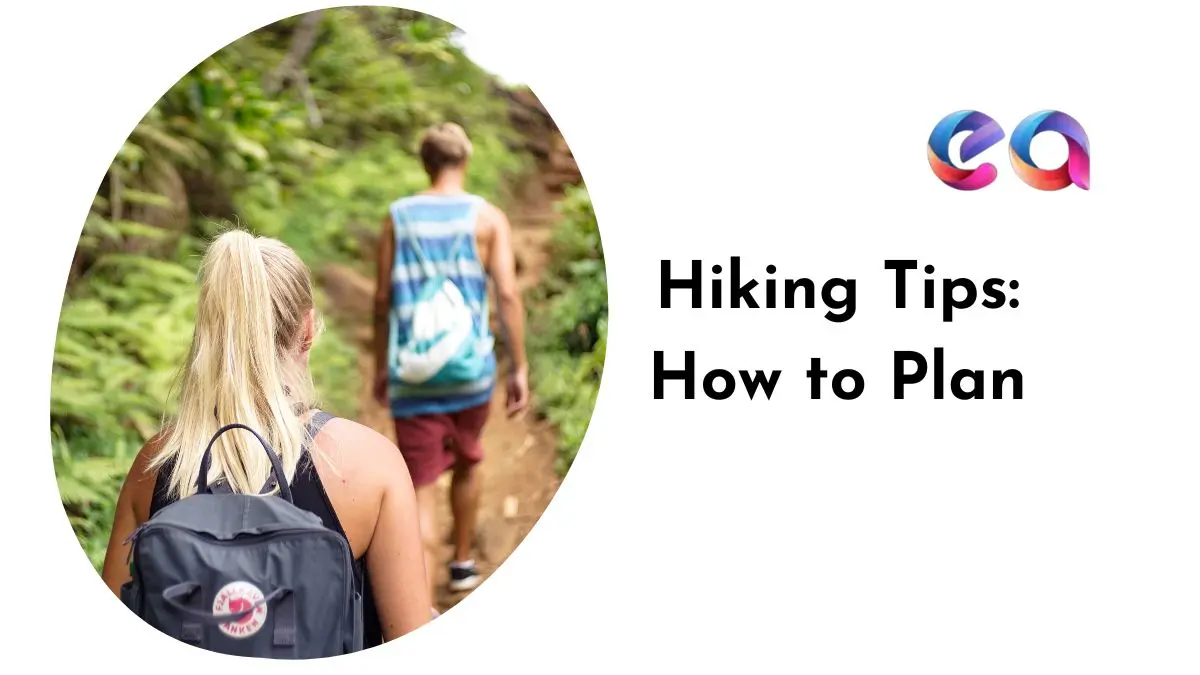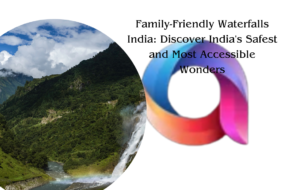
Hiking is a great way to enjoy nature, exercise, and have fun. But hiking can also be challenging, especially for beginners who may not know what to expect or how to prepare. That’s why we have compiled this guide with some of the best hiking tips for beginners, covering everything from what to pack, how to plan, and ways to stay safe on the trail. Whether you want to go on a short and easy hike or a longer and more adventurous one, these tips will help you have a successful and enjoyable hiking experience.
Table of Contents
What to Pack for Hiking?
One of the most important hiking tips for beginners is to pack smart. You don’t want to carry too much weight or forget something essential. Here are some of the items you should pack for hiking:
- A backpack: Choose a backpack that is comfortable, durable, and has enough space for your gear. You may want to look for one with a hip belt, chest strap, and padded shoulder straps to distribute the weight evenly. A backpack with a hydration system or water bottle pockets is also convenient.
- Water: Water is essential for staying hydrated and preventing heat exhaustion or dehydration. You should drink at least one liter of water per hour of hiking, depending on the temperature and your activity level. You can bring water bottles or a hydration bladder, or use a water filter or purification tablets if you plan to refill from natural sources.
- Snacks: Snacks are important for keeping your energy levels up and avoiding hunger. You should pack snacks that are high in protein, carbohydrates, and healthy fats, such as nuts, dried fruits, granola bars, jerky, or cheese. You can also bring some treats like chocolate or candy for a morale boost.
- Clothing: Clothing is another essential item for hiking. You should dress in layers that are appropriate for the weather and the season. You should also avoid cotton, which absorbs moisture and can make you cold and uncomfortable. Instead, opt for synthetic or wool fabrics that wick sweat and dry quickly. Some of the clothing items you should pack are:
- A base layer: This is the layer that goes next to your skin and regulates your body temperature. It should be lightweight and breathable in warm weather, and warm and insulating in cold weather.
- A mid layer: This is the layer that goes over your base layer and provides extra warmth and comfort. It should be flexible and cozy, such as a fleece jacket or sweater.
- An outer layer: This is the layer that goes over your mid layer and protects you from wind, rain, snow, or sun. It should be waterproof, windproof, and breathable, such as a rain jacket or shell.
- Hiking pants or shorts: These are the pants or shorts that you wear for hiking. They should be comfortable, durable, and quick-drying. You may want to look for ones with zip-off legs that can convert into shorts if needed.
- Hiking socks: These are the socks that you wear for hiking. They should be cushioned, moisture-wicking, and seamless to prevent blisters. You may want to look for ones made of wool or synthetic materials.
- Hiking shoes or boots: These are the shoes or boots that you wear for hiking. They should be sturdy, supportive, and comfortable. You may want to look for ones with good traction, ankle support, and toe protection. You should also break them in before your hike to avoid discomfort.
- Hat: A hat is useful for protecting your head from sunburn, windburn, or cold. You may want to look for one with a brim that shades your face and neck.
- Sunglasses: Sunglasses are useful for protecting your eyes from glare, UV rays, or dust. You may want to look for ones with polarized lenses that reduce glare and enhance contrast.
- Gloves: Gloves are useful for keeping your hands warm and dry in cold or wet weather. You may want to look for ones that are waterproof, windproof, and touchscreen-compatible.
- First aid kit: A first aid kit is essential for treating minor injuries or illnesses on the trail. You should pack items such as bandages, gauze pads, antiseptic wipes, antibiotic ointment, painkillers, anti-inflammatory drugs, antihistamines, tweezers, scissors, safety pins, and medical tape. You may also want to include personal medications, allergy medications, or epinephrine pens if needed.
- Sunscreen: Sunscreen is essential for protecting your skin from sunburn, skin cancer, or premature aging. You should apply sunscreen with at least SPF 30 to all exposed areas of your skin at least 15 minutes before going outside, and reapply every two hours or more often if you sweat or get wet.
- Bug spray: Bug spray is essential for protecting yourself from insect bites or stings, which can cause itching, swelling, infection, or allergic reactions. You should apply bug spray with at least 20% DEET to all exposed areas of your skin, and reapply as needed. You may also want to wear long sleeves and pants, and avoid perfumes or scented products that may attract insects.
- Map and compass: A map and compass are essential for navigating your way on the trail and finding your location if you get lost. You should always carry a paper map and a compass, even if you have a GPS device or a smartphone app, as they may not work in remote areas or run out of battery. You should also learn how to use them before your hike, and check them regularly during your hike.
- Flashlight or headlamp: A flashlight or headlamp is essential for seeing in the dark, whether it’s for finding your way, setting up camp, or signaling for help. You should always carry a flashlight or headlamp with extra batteries, even if you plan to finish your hike before sunset, as you may encounter unexpected delays or emergencies. You should also check the weather forecast and the sunset time before your hike, and plan accordingly.
- Whistle: A whistle is essential for signaling for help in case of an emergency. You should always carry a whistle with you, and blow it three times in a row if you need assistance. You should also listen for other hikers’ whistles, and respond with three blows if you hear them.
- Knife or multi-tool: A knife or multi-tool is useful for cutting, opening, repairing, or improvising things on the trail. You may want to look for one that has a blade, scissors, pliers, screwdrivers, can opener, bottle opener, and other tools that you may need.
- Fire starter: A fire starter is useful for starting a fire in case of an emergency or for warmth, cooking, or signaling. You may want to look for one that is waterproof, windproof, and easy to use, such as matches, lighters, flint, or magnesium. You should also pack some tinder, such as cotton balls, dryer lint, or paper, to help ignite the fire.
- Emergency blanket: An emergency blanket is useful for keeping you warm and dry in case of an emergency or for preventing hypothermia. You may want to look for one that is lightweight, compact, reflective, and waterproof, such as a foil blanket or a bivy sack.
- Extra items: Depending on the length and difficulty of your hike, you may also want to pack some extra items, such as:
- A change of clothes: This is useful for changing into dry and clean clothes after your hike or in case your clothes get wet or dirty.
- A rain cover: This is useful for protecting your backpack from rain or snow.
- A trash bag: This is useful for carrying out your trash and leaving no trace on the trail.
- A toilet paper: This is useful for personal hygiene when nature calls. You should also pack a ziplock bag to pack out your used toilet paper and dispose of it properly later.
- A cell phone: This is useful for communication, navigation, entertainment, or emergency calls. You should also pack a portable charger or a solar charger to keep your phone charged.
- A camera: This is useful for capturing the beauty and memories of your hike. You should also pack extra batteries or a memory card for your camera.
How to Plan for Hiking?
Another important hiking tip for beginners is to plan ahead. Planning ahead will help you choose the right trail, prepare your gear, and avoid any surprises or problems on the trail. Here are some of the steps you should take to plan for hiking:
- Choose a trail: The first step is to choose a trail that suits your fitness level, experience level, interests, and goals. You should consider factors such as the distance, elevation gain, difficulty, scenery, and popularity of the trail. You can use online resources such as GaiaGPS or AllTrails to find trails near you or in your desired destination. You can also read reviews, ratings, and photos from other hikers to get an idea of what to expect. You should also check the trail conditions and regulations before you go, as they may change depending on the season, weather, or maintenance.
- Check the weather: The second step is to check the weather forecast for the day of your hike and the days before and after. The weather can affect your hiking experience in many ways, such as the temperature, humidity, wind, precipitation, visibility, and hazards. You should look for a clear and mild weather window that is suitable for hiking. You should also be prepared for any sudden or extreme weather changes that may occur on the trail, such as storms, heat waves, or cold snaps. You should also avoid hiking in dangerous weather conditions, such as thunderstorms, high winds, or heavy snow.
- Pack your gear: The third step is to pack your gear according to the trail and the weather. You should use a checklist to make sure you don’t forget anything essential or pack anything unnecessary. You should also organize your gear in a way that makes it easy to access and distribute the weight evenly. You should also test your gear before your hike to make sure it works properly and fits comfortably.
- Tell someone: The fourth step is to tell someone where you are going and when you expect to be back. This is important for your safety in case of an emergency or if you get lost or injured on the trail. You should leave a note or a message with a trusted friend, family member, or park ranger with details such as your name, contact information, trail name, start and end points, planned route, estimated time of departure and return, and emergency contacts. You should also check in with them before and after your hike to let them know you are safe.
- Leave early: The fifth step is to leave early for your hike. This will give you enough time to complete your hike without rushing or getting caught in the dark. It will also help you avoid traffic, crowds, and parking issues. You should aim to start your hike at least two hours before sunrise or two hours after sunset, depending on the length and difficulty of your hike. You should also factor in some extra time for breaks, snacks, photos, or detours.
Ways to Stay Safe on Hiking – Hiking Tips:
The last but not least hiking tip for beginners is to stay safe on the trail. Hiking can be fun and rewarding, but it can also be risky and unpredictable. You should always be aware of your surroundings, follow the trail etiquette, and know how to deal with any emergencies or challenges that may arise. Here are some of the ways to stay safe on hiking:
- Stay on the trail: One of the most important ways to stay safe on hiking is to stay on the marked trail at all times. This will prevent you from getting lost, damaging the environment, or encountering wildlife or hazards. You should also respect any signs, barriers, or closures that indicate where you can or cannot go. If you need to leave the trail for any reason, such as for a bathroom break or a scenic view, you should make sure you can see the trail from where you are and return to it as soon as possible.
- Stay hydrated: Another important way to stay safe on hiking is to stay hydrated throughout your hike. Dehydration can cause headaches, dizziness, fatigue, cramps, nausea, or worse. You should drink water before, during, and after your hike, even if you don’t feel thirsty. You should also avoid alcohol, caffeine, or sugary drinks that can dehydrate you further. You should also monitor your urine color and volume to check your hydration level. If your urine is dark yellow or scanty, you need to drink more water.
- Stay nourished: Another important way to stay safe on hiking is to stay nourished throughout your hike. Hunger can cause weakness, irritability, low blood sugar, or fainting. You should eat snacks every hour or two during your hike, even if you don’t feel hungry. You should also eat a balanced meal before and after your hike, to replenish your energy and nutrients. You should also avoid foods that are heavy, greasy, spicy, or unfamiliar, as they may upset your stomach or cause indigestion.
- Stay warm: Another important way to stay safe on hiking is to stay warm throughout your hike. Hypothermia can occur when your body temperature drops below 95°F (35°C), and can cause shivering, confusion, slurred speech, or unconsciousness. You should dress in layers that you can adjust according to the weather and your activity level. You should also avoid getting wet or sweaty, as they can lower your body temperature. You should also seek shelter or start a fire if you get cold or wet.
- Stay cool: Another important way to stay safe on hiking is to stay cool throughout your hike. Heat exhaustion or heat stroke can occur when your body temperature rises above 104°F (40°C), and can cause headache, nausea, vomiting, dizziness, or fainting. You should avoid hiking in the hottest part of the day, and seek shade or rest if you get hot or tired. You should also wear sunscreen, a hat, and sunglasses to protect yourself from sunburn or sunstroke. You should also wet your clothes or use a cooling towel to lower your body temperature.
- Stay alert: Another important way to stay safe on hiking is to stay alert throughout your hike. You should pay attention to your surroundings, and watch out for any potential dangers or hazards, such as rocks, roots, cliffs, streams, or wildlife. You should also listen to your body, and stop or turn back if you feel any pain, discomfort, or fatigue. You should also be aware of the signs and symptoms of altitude sickness, such as headache, nausea, shortness of breath, or loss of appetite. You should also avoid hiking alone, and stay in contact with your hiking partners or other hikers if you need help or support.
- Stay positive: The last but not least way to stay safe on hiking is to stay positive throughout your hike. Hiking can be challenging, but it can also be fun and rewarding. You should enjoy the scenery, the fresh air, and the adventure. You should also celebrate your achievements, no matter how big or small they are. You should also be proud of yourself for trying something new and pushing your limits. You should also be grateful for the opportunity to hike and explore nature.
Hiking Tips with Kids:
Hiking with kids can be a wonderful way to share your love of nature and adventure with your family. However, hiking with kids also requires some extra planning, preparation, and patience to make it a fun and safe experience for everyone. Here are some tips for hiking with kids that may help you:
- Choose a kid-friendly trail: When hiking with kids, you should pick a trail that matches their abilities, interests, and attention spans. You should look for trails that are short, easy, and have features that will keep them engaged, such as waterfalls, lakes, bridges, animals, or playgrounds. You can use online resources such as AllTrails or Hiking Project to find kid-friendly trails near you or in your desired destination. You can also read reviews and ratings from other families who have hiked the trails before.
- Involve your kids in the planning: One way to get your kids excited about hiking is to involve them in the planning process. You can show them pictures or videos of the trail and the destination, and let them choose which one they want to do. You can also let them help you pack their backpacks and snacks, and give them a map or a GPS device to follow along the way. By giving them some ownership and responsibility, you can make them feel more invested and motivated.
- Pack plenty of water and snacks: Hiking can be thirsty and hungry work, especially for kids who burn a lot of energy. You should pack plenty of water and snacks for your kids, and encourage them to drink and eat regularly throughout the hike. You should also avoid sugary or caffeinated drinks that can dehydrate them further. Some of the best snacks for hiking with kids are nuts, dried fruits, granola bars, cheese sticks, or crackers. You can also bring some treats like cookies or candy for rewards or incentives.
- Dress appropriately: Hiking with kids requires dressing for comfort and protection. You should dress your kids in layers that are suitable for the weather and the season. You should also avoid cotton clothes that can get wet and cold easily. Instead, opt for synthetic or wool fabrics that wick moisture and dry quickly. Some of the clothing items you should dress your kids in are:
- A base layer: This is the layer that goes next to their skin and regulates their body temperature. It should be lightweight and breathable in warm weather, and warm and insulating in cold weather.
- A mid layer: This is the layer that goes over their base layer and provides extra warmth and comfort. It should be flexible and cozy, such as a fleece jacket or sweater.
- An outer layer: This is the layer that goes over their mid layer and protects them from wind, rain, snow, or sun. It should be waterproof, windproof, and breathable, such as a rain jacket or shell.
- Hiking pants or shorts: These are the pants or shorts that they wear for hiking. They should be comfortable, durable, and quick-drying. You may want to look for ones with zip-off legs that can convert into shorts if needed.
- Hiking socks: These are the socks that they wear for hiking. They should be cushioned, moisture-wicking, and seamless to prevent blisters. You may want to look for ones made of wool or synthetic materials.
- Hiking shoes or boots: These are the shoes or boots that they wear for hiking. They should be sturdy, supportive, and comfortable. You may want to look for ones with good traction, ankle support, and toe protection. You should also break them in before your hike to avoid discomfort.
- Hat: A hat is useful for protecting their head from sunburn, windburn, or cold. You may want to look for one with a brim that shades their face and neck.
- Sunglasses: Sunglasses are useful for protecting their eyes from glare, UV rays, or dust. You may want to look for ones with polarized lenses that reduce glare and enhance contrast.
- Gloves: Gloves are useful for keeping their hands warm and dry in cold or wet weather. You may want to look for ones that are waterproof, windproof, and touchscreen-compatible.
FAQs
Here are some of the frequently asked questions about hiking tips for beginners:
- Q: How do I choose a hiking trail?
- A: You can choose a hiking trail based on your fitness level, experience level, interests, and goals. You can use online resources such as GaiaGPS or AllTrails to find trails near you or in your desired destination. You can also read reviews, ratings, and photos from other hikers to get an idea of what to expect. You should also check the trail conditions and regulations before you go, as they may change depending on the season, weather, or maintenance.
- Q: What should I wear for hiking?
- A: You should wear clothing that is comfortable, durable, and quick-drying. You should also dress in layers that are appropriate for the weather and the season. You should also avoid cotton, which absorbs moisture and can make you cold and uncomfortable. Instead, opt for synthetic or wool fabrics that wick sweat and dry quickly. Some of the clothing items you should wear are:
- A base layer: This is the layer that goes next to your skin and regulates your body temperature. It should be lightweight and breathable in warm weather, and warm and insulating in cold weather.
- A mid layer: This is the layer that goes over your base layer and provides extra warmth and comfort. It should be flexible and cozy, such as a fleece jacket or sweater.
- An outer layer: This is the layer that goes over your mid layer and protects you from wind, rain, snow, or sun. It should be waterproof, windproof, and breathable, such as a rain jacket or shell.
- Hiking pants or shorts: These are the pants or shorts that you wear for hiking. They should be comfortable, durable, and quick-drying. You may want to look for ones with zip-off legs that can convert into shorts if needed.
- Hiking socks: These are the socks that you wear for hiking. They should be cushioned, moisture-wicking, and seamless to prevent blisters. You may want to look for ones made of wool or synthetic materials.
- Hiking shoes or boots: These are the shoes or boots that you wear for hiking. They should be sturdy, supportive, and comfortable. You may want to look for ones with good traction, ankle support, and toe protection. You should also break them in before your hike to avoid discomfort.
- Hat: A hat is useful for protecting your head from sunburn, windburn, or cold. You may want to look for one with a brim that shades your face and neck.
- Sunglasses: Sunglasses are useful for protecting your eyes from glare, UV rays, or dust. You may want to look for ones with polarized lenses that reduce glare and enhance contrast.
- Q: What should I bring for hiking?
- A: You should bring items that are essential for your safety, comfort, and enjoyment on the trail. Some of the items you should bring are:
- A backpack: Choose a backpack that is comfortable, durable, and has enough space for your gear. You may want to look for one with a hip belt, chest strap, and padded shoulder straps to distribute the weight evenly. A backpack with a hydration system or water bottle pockets is also convenient.
- Water: Water is essential for staying hydrated and preventing heat exhaustion or dehydration. You should drink at least one liter of water per hour of hiking, depending on the temperature and your activity level. You can bring water bottles or a hydration bladder, or use a water filter or purification tablets if you plan to refill from natural sources.
- Snacks: Snacks are important for keeping your energy levels up and avoiding hunger. You should pack snacks that are high in protein, carbohydrates, and healthy fats, such as nuts, dried fruits, granola bars, jerky, or cheese. You can also bring some treats like chocolate
Conclusion:
Hiking with kids can be a rewarding and enjoyable activity that can foster a lifelong love of nature and adventure. However, hiking with kids also requires some extra planning, preparation, and patience to make it a fun and safe experience for everyone. By following these hiking tips for beginners, you can choose the right trail, pack the right gear, and stay safe on the trail. So what are you waiting for? Grab your backpacks, lace up your shoes, and hit the trails with your kids! You’ll be glad you did!













